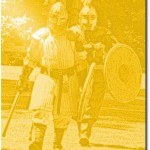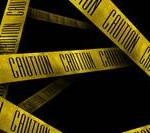Search results
Genealogy: Getting to Know Your Ancestors
June 14, 2012 by ramona
Filed under Archives, Family History, Genealogy groups, societies and organizations, Latest News
 The Merriam Webster Dictionary gives a definition of genealogy as:
The Merriam Webster Dictionary gives a definition of genealogy as:
- an account of the descent of a person, family, or group from an ancestor or from older forms
- the study of family pedigrees
Strictly speaking, this is true; it is certainly a good definition of the process and an accurate descriptor of the intent with which genealogy is first approached. However, to those of us who have spent any length of time on this addictive hobby, the study of our ancestors begins to take on new meaning.
It is not long after family tree research begins that the dry definitions become inadequate. As we work our way through record after record, learning piecemeal the details of our ancestors lives we begin to feel we are getting to know them as individuals.
For some, the genealogical aspects of family history research are not enough. We want to get to know our forefathers on a deeper level. Become more familiar with their day-to-day lives.
If you count yourself among those wishing for a deeper understanding of your generations past, there are a number of activities you can participate in; activities that will allow you to experience your family history in a very real way.
Recreationists
Pick almost any period in history and you will find a group of people actively recreating the era. Living history groups include the activities, dress and tools of the eras they portray to give participants the sense of stepping back through time. Recreationists are not re-enactors; they are not scripted nor are they involved in recreating specific events. Member’s interests can include clothing styles, pastimes, cookery and artisanship, everything that would help create a feeling of every day life in bygone days. It is not at all surprising that among their ranks you find many genealogists and family historians.
Living History Groups
From late 20th century groups like “The 20th Century Revisited” A UK based group recreating scenes and events from various parts of the later 20th Century including WW2 resistance, and 1970 British Army of the Rhine (BAOR) or “Paper Dolls” An international group made up of female members who portray military and civilian life during World War Two. From hometown sweethearts, Women’s Land Army, French Resistance, American Red Cross, Women’s Army Corps. These groups offer an opportunity to learn what it was like for ancestors who lived during the great wars; both on and off the battlefield.
If you are more interested in the events of the 19th century The Living History Society of Minnesota members can attend workshops and participate in activities designed to increase their knowledge of mid 19th century life. For those whose Gr,Gr,Gr, Grandfathers heeded the familiar call of “Go West young Man” the Mojave Muleskinners have several branches across the US, Canada and the UK where you can immerse yourself and learn about life in the old west.
If you can trace your family tree to medieval times, a living history group from the Middle Ages may be more suiting. The Society for Creative Anachronism (SCA) is an international organization with over 30,000 members residing in countries around the world. One of the best things about this group is that you will find a mix of cultures from Viking to Italian to Middle Eastern. Members attend events such as tournaments, royal courts, feasts, dancing, various classes, workshops and more. The SCA is a group that lets you explore all of the European lines in your family tree.
If you want to know more about how living history groups can help enrich your genealogy and family history or how to find a group near you, just post a question to the Genealogy in General board on the Genealogy Beginner forums.
Genealogy Standards: You Need to Know Now
December 17, 2011 by Sherri
Filed under Articles, Genealogy Standards & Guidelines, Introduction to Genealogy, Latest News, Lesson 1 Articles
 You have found some intriguing information on an ancestor that has you very excited.
You have found some intriguing information on an ancestor that has you very excited.
It is a significant event
Gives dates and places
May even promise to break through a brick wall
What it does not have is a proper source citation. Do you believe it or not?
I share the following story with you to demonstrate why learning to use and strictly follow the Genealogy Standards and Guidelines may be the most important lesson you learn.
Here is why Genealogybeginner.com’s Lesson 1 – The Big Five Genealogy standards and guidelines is so important!
Genealogy Believe it or Not
While working on collecting documented evidence to use in a biography for an ancestor. I ran across a web page that claimed to place my ancestor in North America 15 years earlier than previously thought. It also connected him with a notable historic person.
There are two reasons why this information is both extremely exciting and misleadingly dangerous.
Family Tree Excitement
- The source had the BDM information correct
- Another tie to this notable person and my ancestor has been well documented in government sources.
Ancestors in Danger
These two facts make the information I found plausible. However, I have not run across this particular event in any known primary or secondary source.
So, although excited to find this reference, the first thing I did was look for a source citation for the event. Sadly there was none listed, in fact there were no source citations listed for anything. Far too often this is the case and far too often misleading information is assumed to be fact by trusting, inexperienced ancestor hunters.
A Caution for the Genealogy Beginner
1. Indexes, databases and published family trees
Indexes, databases and published genealogical works are wonderful research helps when used correctly. They are not EVER to be considered sources under any circumstances. Indexed information, although associated with a primary source record, is not the record itself.
2. If you can not document the source it is simply genealogy fiction
When recording your information provide a complete and full citation of your sources. Without this information all the work you have done is simply fiction.
Everything you need to know about genealogy standards and guidelines is available to you right here at genealogybeginner.com.
Subscribe today for your need to know lesson on Genealogy Standards & Guidelines
Image credit: haleyb412 via Photobucket
Genealogy or Family History?
October 2, 2011 by ramona
Filed under Articles, Genealogy for Beginners, Getting Started in Genealogy, Introduction to Genealogy
 For many beginning genealogists, the line between the concrete facts of genealogical research and the personal lore of family history are easily blurred. This article by Genealogy Beginner’s resident genealogist, Ramona Hartley clearly demonstrates the difference between the two related but separate fields of study. Do you know the difference between genealogy and family history? When you are a beginning genealogist; taking those first tentative steps in researching your ancestry, it can be difficult to distinguish the difference between them.
For many beginning genealogists, the line between the concrete facts of genealogical research and the personal lore of family history are easily blurred. This article by Genealogy Beginner’s resident genealogist, Ramona Hartley clearly demonstrates the difference between the two related but separate fields of study. Do you know the difference between genealogy and family history? When you are a beginning genealogist; taking those first tentative steps in researching your ancestry, it can be difficult to distinguish the difference between them.
The terms genealogy and family history refer to two separate but equally significant approaches to exploring your roots. The fundamental difference between the two methods lies in the sources of information used to conduct the research. These sources consist of primary, secondary, and tertiary information.
Genealogy
The study of Genealogy refers to the fact based inquiry into your ancestry. It is the concrete process of searching for your genetic origins by gathering and documenting the names, dates and locations of your predecessors. Genealogy requires adherence to the precise information presented within public record to provide irrefutable evidence of your lineage.
A genealogist’s tools are the source materials such as Statutory Index Records for marriages, births, deaths, and baptisms, although at times family bibles and Census Records can be primary sources. To correctly conduct genealogy research you would want to use only primary source information, which means using any record showing a first hand account of an event and containing the signature of a witness.
Family History
Family History refers to the study of the unique details and personal events in your ancestor’s lives; it is their story as told by you, their descendant. Family history research fleshes out the full account that gives life and character to your family tree by including the private details of your generations past; these being the fine points of lives lived that are not found solely within public records. A family historian can use secondary and even tertiary information such as, old photographs, diaries, letters and family lore.
Tying it together
That is not to say that you can not use primary sources for family history research. The study of family history often requires the need to read between the lines of public documents and dig a little deeper to find the tale that lies within. Some truly wonderful opportunities for family history stories are hidden in genealogical data.
Using a fantastic clue found in an Old Parish Record, I will show you how the two can work together.
Genealogy Data + the Family Historian = A Great Story
OPR Extract:
Parish of Carstairs, County of Lanark. Dated May 2nd. 1790
“May 2nd, this day Alexander Gibson in Longflush and Christian Weir had a daughter {Begot in Fornication}. Baptized, Named Janet Gibson.”
The Family History element
This baptismal record from Scotland 1790, tells us that the child being baptized was “begot in fornication”. Even so, both father and mother were listed in the parish record.
Sensing a good family history story, I researched what the term “Begot in Fornication” would have meant to the lives of these individuals in 1700’s Scotland.
What I found was that, the community was very narrow-minded in those days, quick to bring transgressors before the sessions. In this case the father of the child came forward and admitted his liabilities. Due to this he was listed in the record even though he did not marry the mother. The parents of the child being from “good church going families” would have been brought to task publicly and admonished for their sin, this over a period of three Sundays at normal services. Having then been deemed publicly humiliated they would be, so to speak, brought back into the fold and the child baptized.
Wrap up
The short and sweet answer to the question; do you know the difference between genealogy and family history is… You are a genealogist when: you are searching for and documenting records from primary sources and your concern is for factual, proven accounts of births, baptisms, marriages and deaths. You are a family historian when: you are using those facts in addition to reported events that although probable, may not be substantiated by first hand account in the available records; for the purpose of telling the story of your family’s unique and very personal past.
No matter what your method, don’t be surprised if when rediscovering their lives’, you gain a better understanding of your own.
Article Source: http://EzineArticles.com/?expert=Ramona_Hartley
